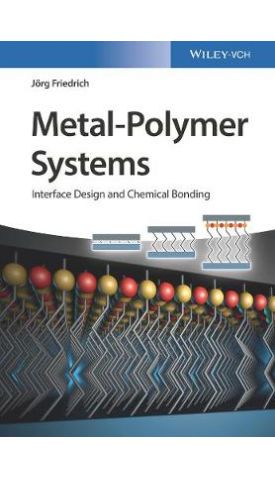אנו משתמשים ב-Cookies כדי לשפר את החוויה שלך. כדי לקיים ההנחיה החדשה של e-Privacy, עלינו לבקש את הסכמתך להגדיר את ה-Cookies. קבלת מידע נוסף.
918.00 ₪
Metal-Polymer Systems - Interface Design and Chemical Bonding
918.00 ₪
ISBN13
9783527336777
יצא לאור ב
Weinheim
זמן אספקה
21 ימי עסקים
עמודים
448
פורמט
Hardback
תאריך יציאה לאור
11 באוק׳ 2017
Covering both the academic and practical aspects, this is the first book to focus entirely on achieving high-strength metal-polymer composites through chemical bonding, which is shown as a simple and economically viable alternative to adhesion based on reversible interaction.
The result of decades of research by a pioneer in the field, this is the first book to deal exclusively with achieving high-performance metal-polymer composites by chemical bonding. Covering both the academic and practical aspects, the author focuses on the chemistry of interfaces between metals and polymers with a particular emphasis on the chemical bonding between the different materials. He elucidates the various approaches to obtaining a stable interface, including, but not limited to, thermodynamically driven redox reactions, bond protection to prevent hydrolysis, the introduction of barrier layers, and stabilization by spacer molecules. Throughout, chemical bonding is promoted as a simple and economically viable alternative to adhesion based on reversible interaction. Consequently, the text equips readers with the practical tools necessary for designing high-strength metal-polymer composites with such desired properties as resilience, flexibility, rigidity or degradation resistance.
| עמודים | 448 |
|---|---|
| פורמט | Hardback |
| ISBN10 | 352733677X |
| יצא לאור ב | Weinheim |
| תאריך יציאה לאור | 11 באוק׳ 2017 |
| תוכן עניינים | Adhesion and Diffusion Description of Main Theories of Adhesion Chemical Reactions at Interfaces Design of Ideal Interfaces Interactions at the Interface and at the Near-Interface Region Realization of New Interface Designs Particularities of Polyolefin Surfaces Methods for Introducing Functional Groups onto Polyolefin Surfaces Principal Problems with Functionalization of Polyolefins Differences between Metals and Polymers as Substrate Materials Characterization by Surface Energy Thermodynamics Work of Adhesion Surface Modification Preferred Functional Groups for Maximal Adhesion Acid-Base Interactions and Use of Silanes Introduction of Spacers Fluoropolymers Strongest and Most Durable Metal-Polymer Bonds Adhesion Results of High-Strength and High Durable Composites Adhesion Promotion for Carbon Fibres and Graphene Electrospray Deposition of Adhesion Promoting Layers Corrosion Inhibition |
| זמן אספקה | 21 ימי עסקים |



Login and Registration Form